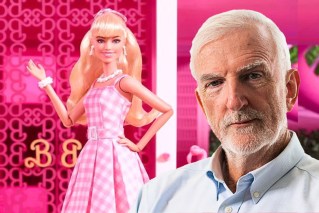Michael Pascoe: Time for Baby Boomers to admit they had it much, much better than it is now


It has never been harder to buy a home and pay the mortgage, has it? Photo: Getty
My fellow Boomers, you know how we like to tell young whippersnappers/whippersnippers/whatevs how much harder we had it, living in lake [luxury], getting up before going to bed, eating coal, etc?
Well, Philip Lowe says we can’t any more.
The headlines for the RBA governor’s speech last week concentrated on his hint that he is closer to pausing his interest rate rises.
What was often overlooked was the key reason for such a pause: Monetary policy has never screwed so much money out of households before.
Yes, even though the interbank overnight rate peaked at 19 per cent in September 1989 and the RBA’s cash rate started 1990 at 17 to 17.5 per cent, those eye-watering interest rates were taking up a smaller percentage of the average Australian household’s disposable income than the present cash rate of 3.6 per cent will end up doing.
“Based on the interest rate increases that have already occurred, total required mortgage payments are expected to reach 9.5 per cent of household disposable income later this year, which will be around a record high,” Dr Lowe said.
A record high
And he had a graph to prove it, a graph that shows the rate will tick up a little more next year as the last of the cheap fixed rates end. And that’s without the RBA’s explicit expectation of at least one more rate increase.
So let’s scratch the “around” and call it for what it is – a record high.
Yes, Boomers’ interest rates were higher, but the cost of housing was much, much lower and therefore the percentage of household income that went on the mortgage was lower.
No longer can we claim we had it tougher.
Of course, compulsory mortgage payments taking 9.5 per cent of all household disposable income doesn’t tell the full story. It obviously is not happening to the 65 per cent or so of us without a mortgage.
Condense that 9.5 per cent down to the 35 per cent of us with a mortgage and you begin to get an idea of the real pain.
As reported here last week, by the RBA’s own estimates, nearly 15 per cent of borrowers will see their cash flow “turn negative” with the 3.6 per cent cash rate.
“Turn negative” means they won’t have any cash after paying tax, their mortgage and the barest of essentials. For some, not even the bare essentials.
A third of borrowers will have their cash flow shrink by at least 40 per cent.
No, it’s not fair that only a minority of Australians are being directly bashed over the head by monetary policy to weaken our economy and increase unemployment, but they are the only people the RBA can target.

RBA governor Philip Lowe unveiled a 10th straight interest rate hike last week. Photo: AAP
The federal government could more equitably distribute such pain, but that would involve a level of mature and responsible politics Australia is not capable of.
Don’t bother blaming the banks
(A small aside: Don’t bother blaming banks for passing on the full rate rises as the RBA factors in the banks’ behaviour. We end up paying the rate the RBA wants us to pay, whatever percentage represents higher bank profits.)
Combined with low wages growth and higher inflation, the present level of interest rates means real household disposable income has fallen further and faster than it did in the 1990s recession.
It is more than reasonable then that the RBA should pause its tightening to see just how much the economy is going to suffer as the full impact rolls through.
While borrowers feel the pain first, people who depend on other folk spending money get the secondary impact.
An anecdote: My optometrist told me that this year he’s only ordering half the stock he usually would.
Some of us are still spending up big and some businesses are still going gangbusters, but the fear is taking root, as seen in business and consumer confidence surveys.
Setting that record has given Dr Lowe plenty to fear, too.
And that was before last weekend’s Californian bank failure put the frighteners through central bankers.








